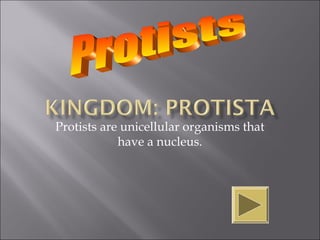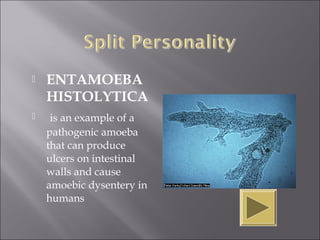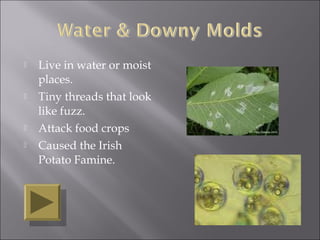Protists are unicellular eukaryotic organisms that can be animal-like, plant-like, or fungus-like. They include protozoa such as amoebas and flagellates, as well as algae. Protists live in aquatic and moist environments and can be photosynthetic autotrophs or heterotrophic consumers. They vary greatly in appearance, functions, and impacts on humans and other organisms.



























